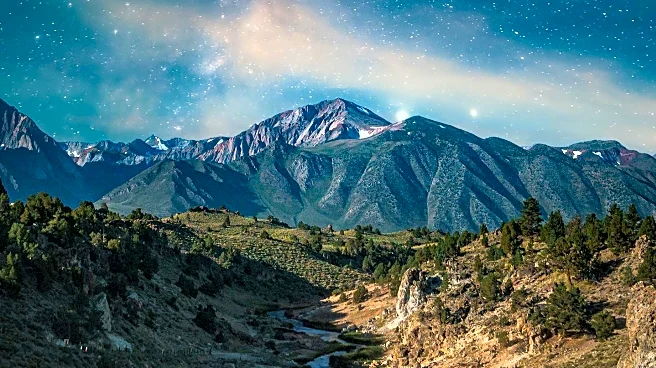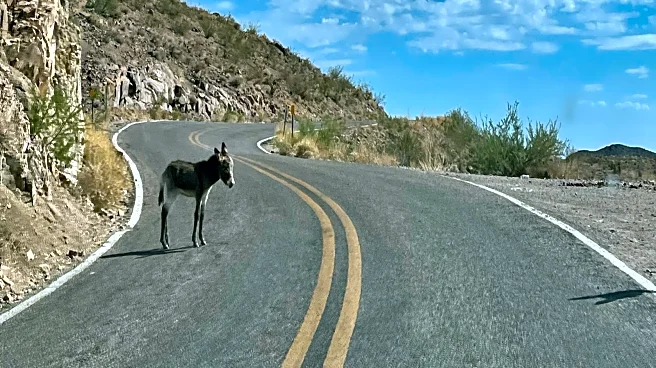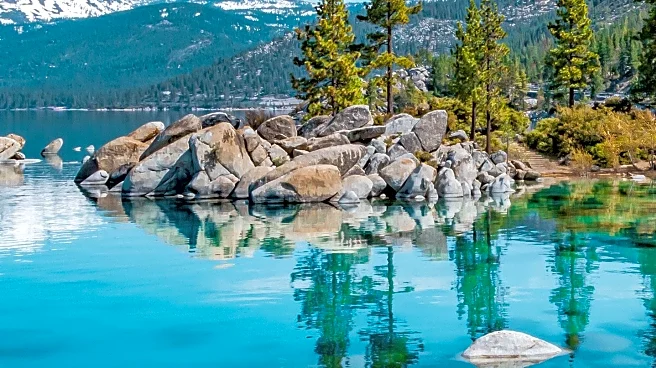What's Happening?
Great Basin National Park, located off eastern Nevada's U.S. Route 50, is renowned for its dark skies, making it an ideal location for stargazing and astronomical observations. The park features the 13,063-foot Wheeler Peak, Nevada's last remaining glacier, and ancient bristlecone pines. It is recognized as one of the darkest places in the United States, offering clear views of the night sky due to its high elevation and low light pollution. The park hosts regular astronomy programs and an annual festival, attracting enthusiasts and researchers. The Great Basin Observatory, located within the park, supports scientific research with its advanced telescopic equipment.
Why It's Important?
The park's dark skies are a valuable resource for both scientific research and public education. The Great Basin Observatory contributes to astronomical studies, including observations of binary stars and exoplanets, which are crucial for understanding the universe. The park's efforts to preserve its dark skies highlight the importance of minimizing light pollution, which is a growing concern globally. By providing opportunities for the public to experience pristine night skies, the park fosters appreciation and awareness of the need to protect such environments. This initiative supports both scientific advancement and cultural enrichment.
What's Next?
The park will continue to host its annual astronomy festival and regular stargazing events, promoting public engagement and education. Efforts to preserve the dark skies will likely involve ongoing collaboration with local communities and stakeholders to minimize light pollution. The observatory will persist in its research activities, potentially contributing to significant astronomical discoveries. As awareness of light pollution grows, similar initiatives may be adopted by other regions, enhancing global efforts to protect dark sky environments.
Beyond the Headlines
The preservation of dark skies at Great Basin National Park underscores broader environmental and cultural implications. It highlights the intersection of conservation efforts with scientific research and public education. The park's initiatives serve as a model for balancing ecological preservation with human activity, offering insights into sustainable practices that can be applied elsewhere. The cultural significance of experiencing a natural night sky also plays a role in fostering a deeper connection to the natural world.












